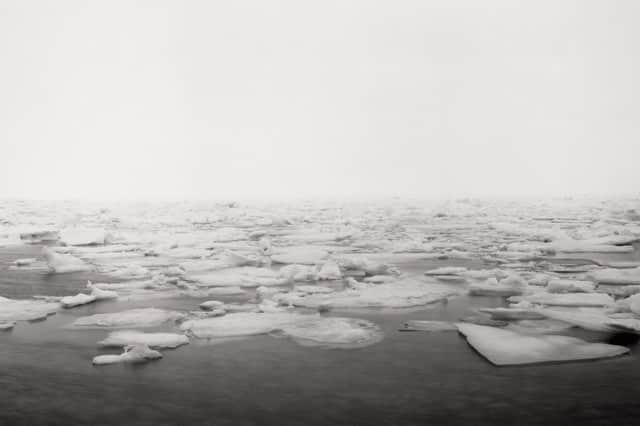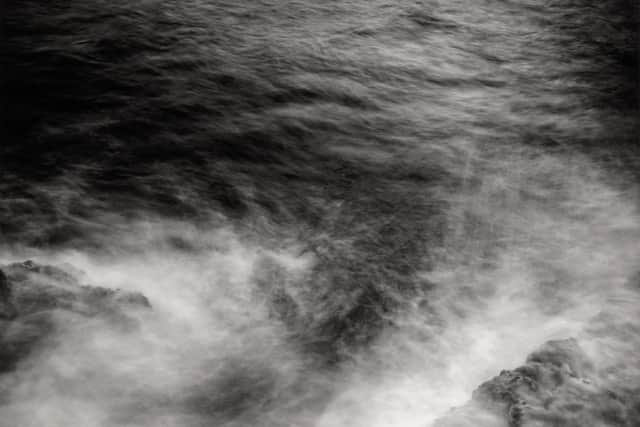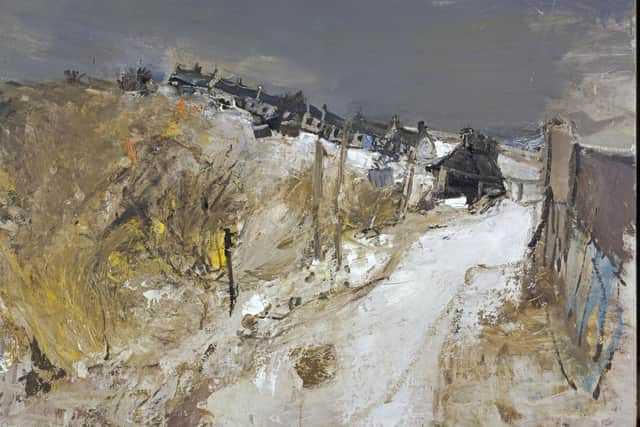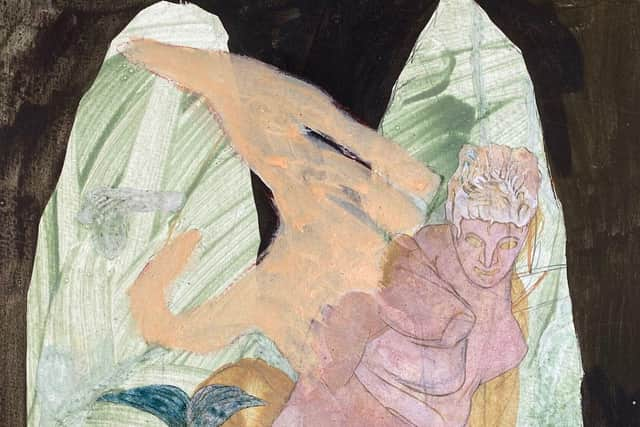Art reviews: Thomas Joshua Cooper | Joan Eardley Centenary | Joan Eardley and Catterline | Bathing Nervous Limbs


Thomas Joshua Cooper, World’s Edge, Scottish National Portrait Gallery, Edinburgh *****
Joan Eardley Centenary, Scottish Gallery, Edinburgh ****
Joan Eardley and Catterline, Scottish National Gallery of Modern Art ****


Bathing Nervous Limbs, Arusha Gallery, Edinburgh ****
Advertisement
Hide AdThomas Joshua Cooper sometimes seems to be as much explorer as photographer. Indeed, to reach the places he has visited to take the wonderful photographs in World’s Edge at the Scottish National Portrait Gallery, he has often followed in the footsteps, or as often the boat’s wake, of the very first explorers, whether St Brendan in the Canary Islands or Magellan at Cape Horn, and he is very conscious of this heritage and of the frequent historical resonances of the places he visits. His original project many years go was to record the salient points in the Atlantic Basin, north, south, east and west and all the compass points between. Spots on a map on the wall show him at the North Pole and the South Pole and at the points on the shores, or capes, or islands in between that mark the edges of the continents and of the seas that divide them, the northernmost point of the British mainland near Dunnet Head, the most north-westerly point of the European mainland in Norway, the most westerly point in Africa, the most easterly points in North and South America and where the oceans meet at Cape Horn and the Cape of Good Hope, and the pictures are there to prove it. It is safe to say that few modern travellers have faced such hazards or endured such hardships to travel so far. In the Antarctic, he reached an island which, as its first ever visitor, he could formally claim the right to name and he did, Catherine Island, after his wife.
On his journeys he carries 40 pounds of equipment, including a massive antique camera and tripod, often with little or no assistance. For one picture he walked for 36 hours, for another he waded up to his shoulders in freezing water and in yet another he was nearly washed into the sea. All these pictures of freezing, foaming water and he doesn’t swim. To add to the difficulty, he only ever takes one photograph in a given spot, but cannot know if his shot is a success until he develops the plate back home.
Like all the early explorers, he is very often venturing into the unknown with all its hazards, but these difficulties all add a potent metaphysical dimension to what he does. Like St Brendan’s voyage, his undertaking becomes a kind of pilgrimage, a spiritual quest, and his pictures bear this out. On one occasion on the ice shelf in Antarctica, pinned down in his camp by a gale that raged for three weeks, with huge difficulty and seven people holding him and his equipment in place against the wind, he nevertheless took a picture. Taken in a whiteout, it is simply white. Extreme physical conditions produce an image of Zen-like simplicity, of a spiritual purity that the Celtic saints would have immediately understood.


Cooper’s pictures are only ever black and white. No pixels here, the late 19th-century camera he uses gives a pin-sharp image. It also gives great richness of tone and allows him to print up to a really large format. The results are visually stunning. By the nature of his project, they are mostly of rocks and water, if not of ice and snow. Vegetation is limited to occasional dry grass on a cliff top, or gleaming kelp as a wave withdraws. The austerity of these beautiful images is an important part of their appeal, but there is more to it than that. The camera changed profoundly our relationship with time. All previous images were slow to produce by a working artist. The early cameras, however, with their long exposures, and Cooper’s camera belongs with them, seemed literally to take a slice out of time. In response, the philosopher Henri Bergson, whose ideas did much to shape modern art, came up with the idea of “durée” – of time lived as we share it with all creation, as opposed to time intellectually understood. In Cooper’s pictures with their long exposure, the black rocks are sharp and clear, the water’s movement is a blur. These are pictures of durée, of time lived and all the reflections that invites.
Joan Eardley’s share of time lived was too short. This is the centenary of her birth, yet she died in 1963, nearly 60 years ago. She is commemorated now in shows at the Scottish Gallery and at the Scottish National Gallery of Modern Art. Together they remind us how remarkable her achievement was. She began to paint in Glasgow in the 1940s and her art was gritty and social realist. There is a pastel in the Scottish Gallery of a jetty with a crane all smoke and grime and a drawing of a woman knitting that recalls Van Gogh’s early work. Later she engaged directly with the children in the streets around her studio in Glasgow’s Townhead and they are represented here in some beautiful, wholly unsentimental drawings that give them all the dignity of their individuality. Later too she worked their world into the image. In A Girl with a Poke of Chips, also at the Scottish Gallery, the poke is real newspaper collaged onto the canvas.
Eardley’s work at Catterline is represented here too in, for instance, a spectacular small painting of the winter sea. She uses sand from the beach in her painting like the experimental art of Italian Alberto Burri. In Grey Beach and Sky, the sweep of her brush follows the sweep of the waves, the horizon tipped up by their energy. The National Gallery show focusses on Catterline works like these and the collection does demonstrate beyond question what a major artist she was. The Wave, for instance, or Seascape (Foam and Blue Sky) are both walls of water that seem poised to crash onto the gallery floor. In Seeded Grasses and Daisies, she has brought the summer into the painting with stalks of grass and flower heads. In all this she shows how she was aware of the exciting work of her contemporaries, the French and American abstract painters, the collages Rauschenberg and the graffiti of Dubuffet, but she did not surrender to the siren song of abstraction to become just another feeble imitator. She stuck to her engagement with the world around her. In this she really was original.
Advertisement
Hide AdAt the Arusha Gallery, Bathing Nervous Limbs is a show of work by 20 artists who take their text from a 15th-century manuscript about healing waters. Their work is diverse. Some, like Natalia González Martín, paint figures in water, while Tahnee Lonsdale’s coloured drawings are of people in bathrooms and on beaches. Jessie Whitley paints a figure sharing a puddle with an ominous variety of other things. Ithell Colquhoun’s Stalactite is a nicely painted, watery view from within a very gynaecological cave. Others do seem to wander off the point, but there is a nice variety of media, ceramics by Briany Rose and Paloma Proudfoot, for instance, and a pseudo-pseudo-tapestry by Emilia Kerr-Beale, and overall it is a nice miscellany.


Thomas Joshua Cooper until 23 January 2022; Joan Eardley Centenary until 28 August; Joan Eardley and Catterline, SNGMA, no closing date available; Bathing Nervous Limbs, until 29 August. For full listings for this year’s Edinburgh Art Festival, visit www.edinburghartfestival.com
A message from the Editor:
Advertisement
Hide AdThank you for reading this article. We're more reliant on your support than ever as the shift in consumer habits brought about by coronavirus impacts our advertisers.
If you haven't already, please consider supporting our trusted, fact-checked journalism by taking out a digital subscription at https://www.scotsman.com/subscriptions